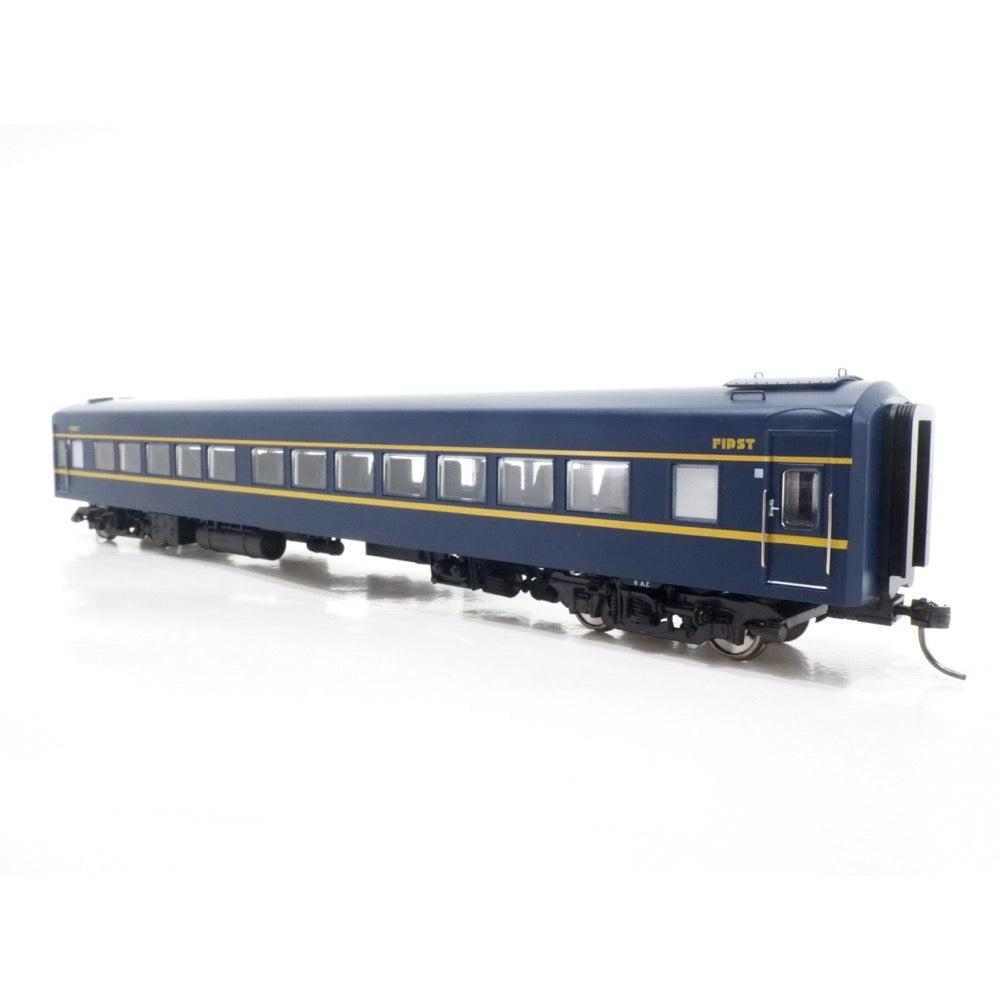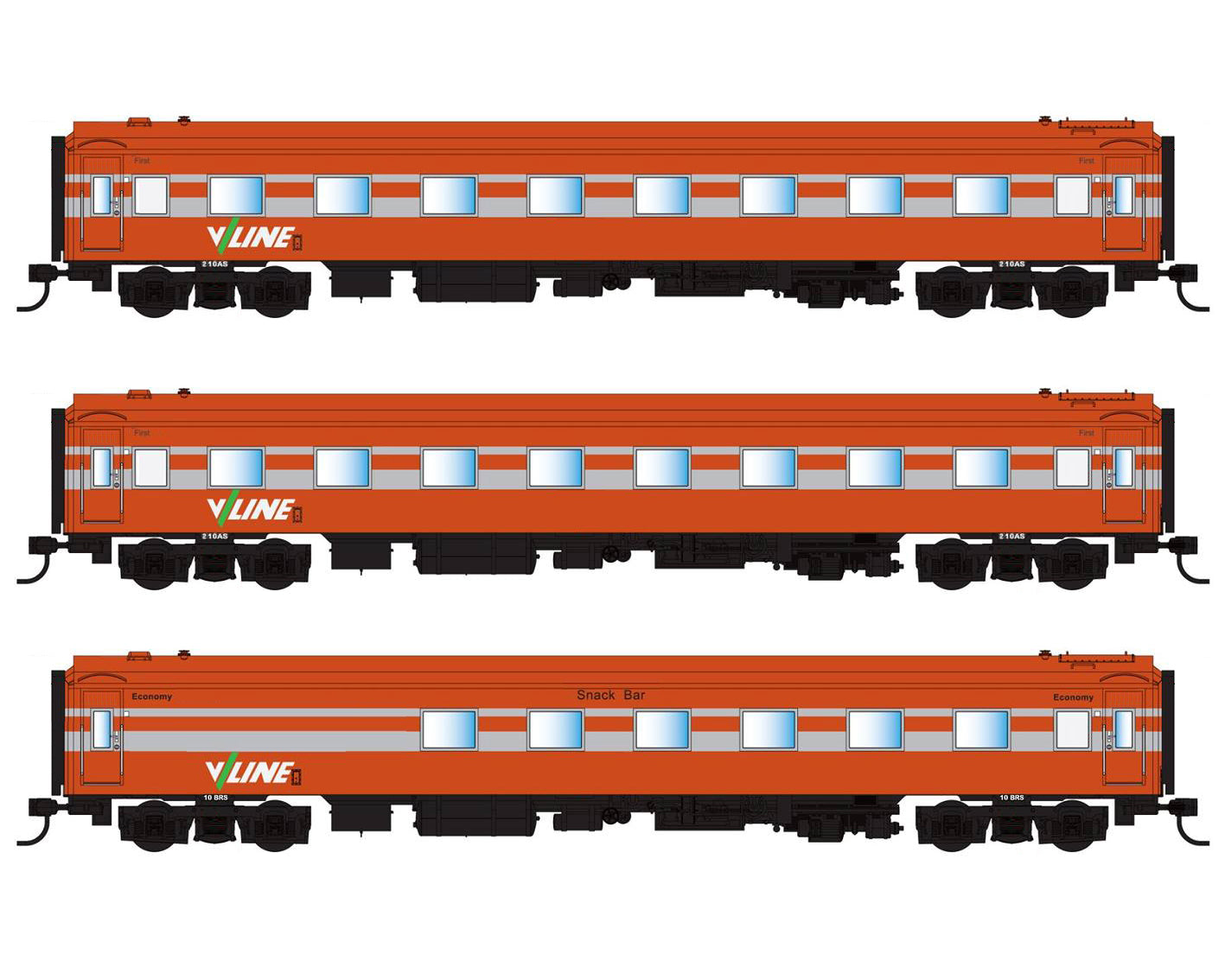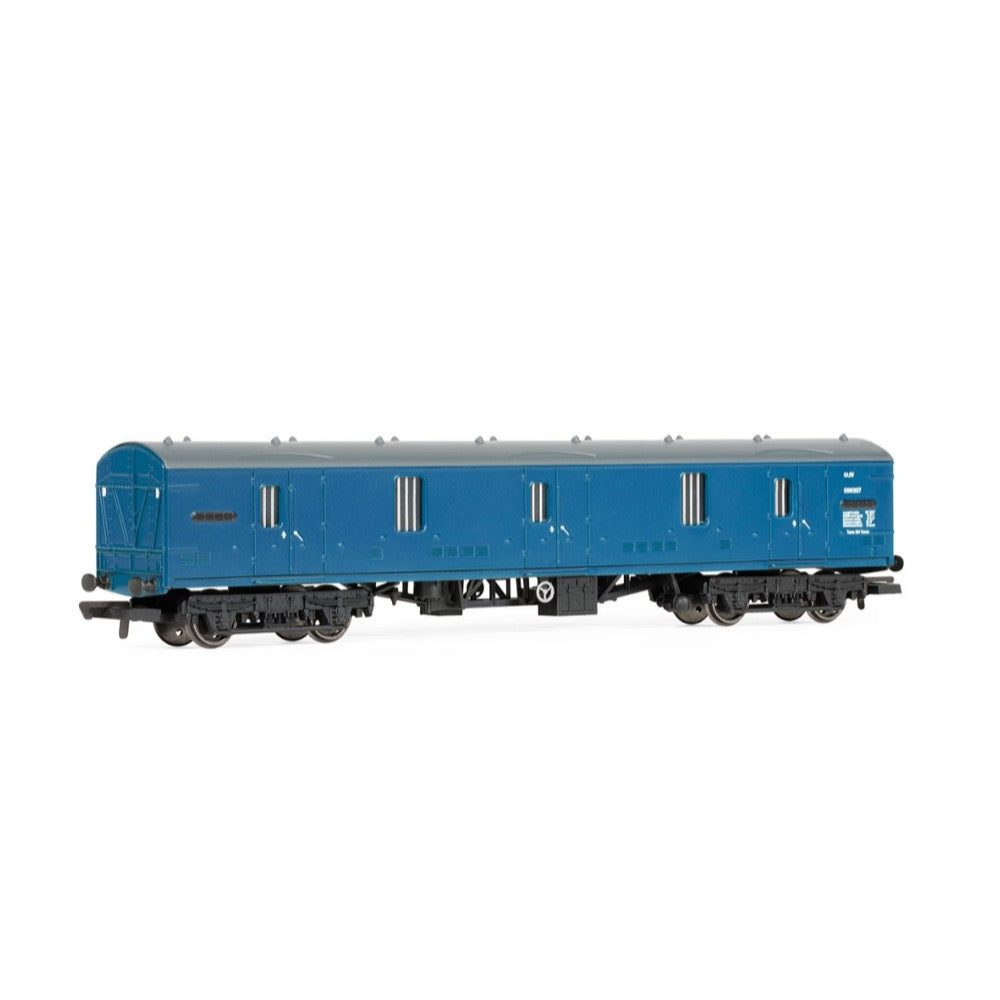
Hornby R60091 OO BR GUV
A General Utility Van (GUV) is a type of rail vehicle built by British Rail primarily for transporting mail and parcels. They were used by both Rail Express Systems and Railtrack. Colas Rail and some train operating companies still use them. The Departmental Utility Van posessed the goods carrying potential vital for its task of carrying materials pertinent to the company. The BR Departmental Utility Van is a worthwhile addition to your burgeoning collection, if your interest is kindled in those rail vehicles dedicated to maintaning the processes and efficency of the railway as well as freight and customer travel.
Specification
- Item Length - Without Packaging (cm): 9.5
- Item Height - Without Packaging (cm): 5
- Item Width - Without Packaging (cm): 3.5
- Item Scale: 1:76 Scale 00 Gauge
- Finish: Painted
- Colour: Blue
- Operator: BR
- Designer: BR
- Livery: BR Departmental
- Minimum Curve (mm): Radius 1
- Number of Parts: 1
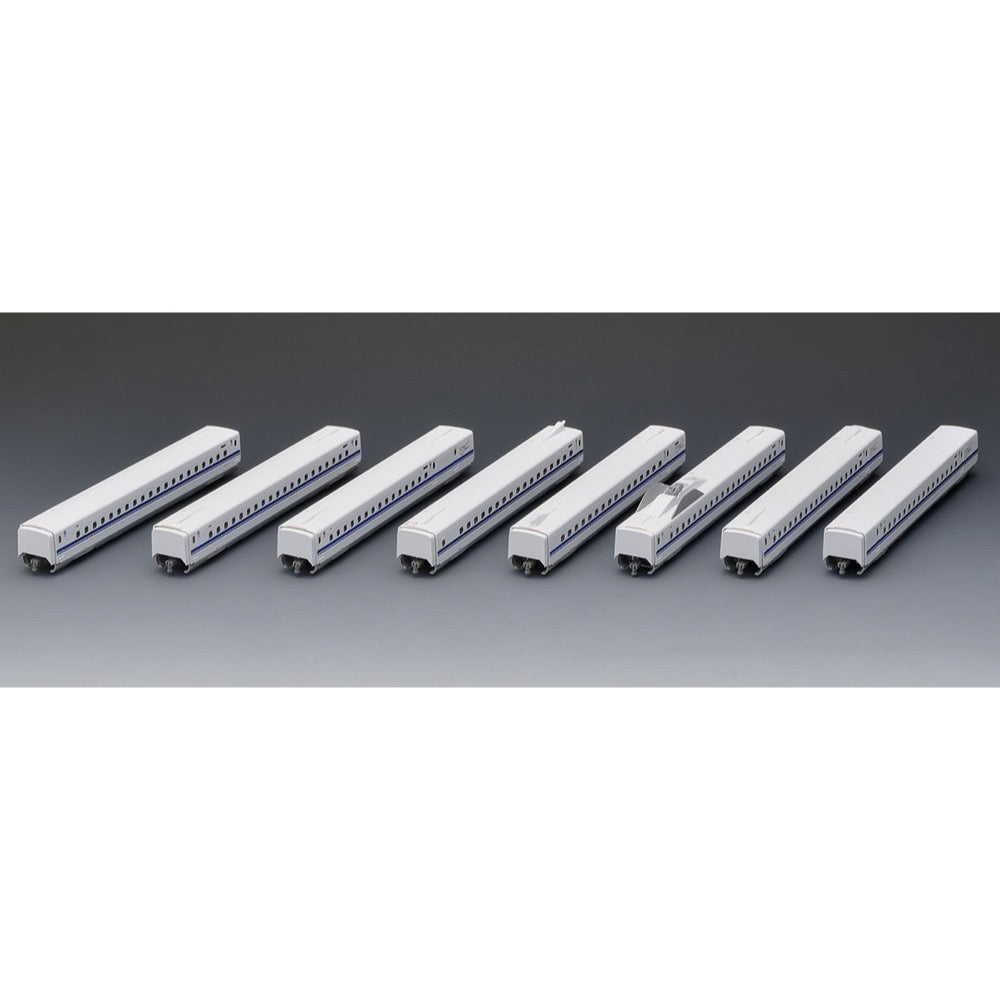
Tomix 98426 N N700 (N700S) Tokaido Sanyo SHINKANSEN extension B 8 cars pack
The N700S is a new type of Tokaido-Sanyo Shinkansen train developed based on the conventional N700 series. A confirmation test car of this series appeared in March 2018, and various tests were conducted.
A mass-produced car based on the confirmation test car was manufactured and began operation mainly for the "Nozomi" from July 2020. The mass-produced car has changes to the bogie cover and antenna shape of the leading car.
Features
- A full 16-car formation can be recreated with this product (cars 2, 6, 7, 8, 9, 12, 13, and 15), the <98424> Basic Set, and the <98425> Add-on Set A
- The 747-0 and 747-500 are recreated with new bodies that are different from the confirmation test cars
- "N700 Supreme" logo mark printed
- Car number can be selected and a transfer sheet is included
- JR mark, Green Car mark, car number (car body and roof), no smoking mark, and roof warning sign are printed
- Transfer sheet for upgrades included
- Colored seats
- Equipped with movable hood
- Hook and U-shaped conductive coupler
- Flywheel-equipped power source
- New current collection system and silver wheels
- M-13 motor
Contents
Vehicles
- 747-0
- 746-0
- 747-400
- 735-0
- 736-0
- 745-600(M)
- 745-500
- 747-500
Accessories
- Parts: Powered bogie mounting auxiliary rod
- Transfer sheet: Vehicle number, etc.
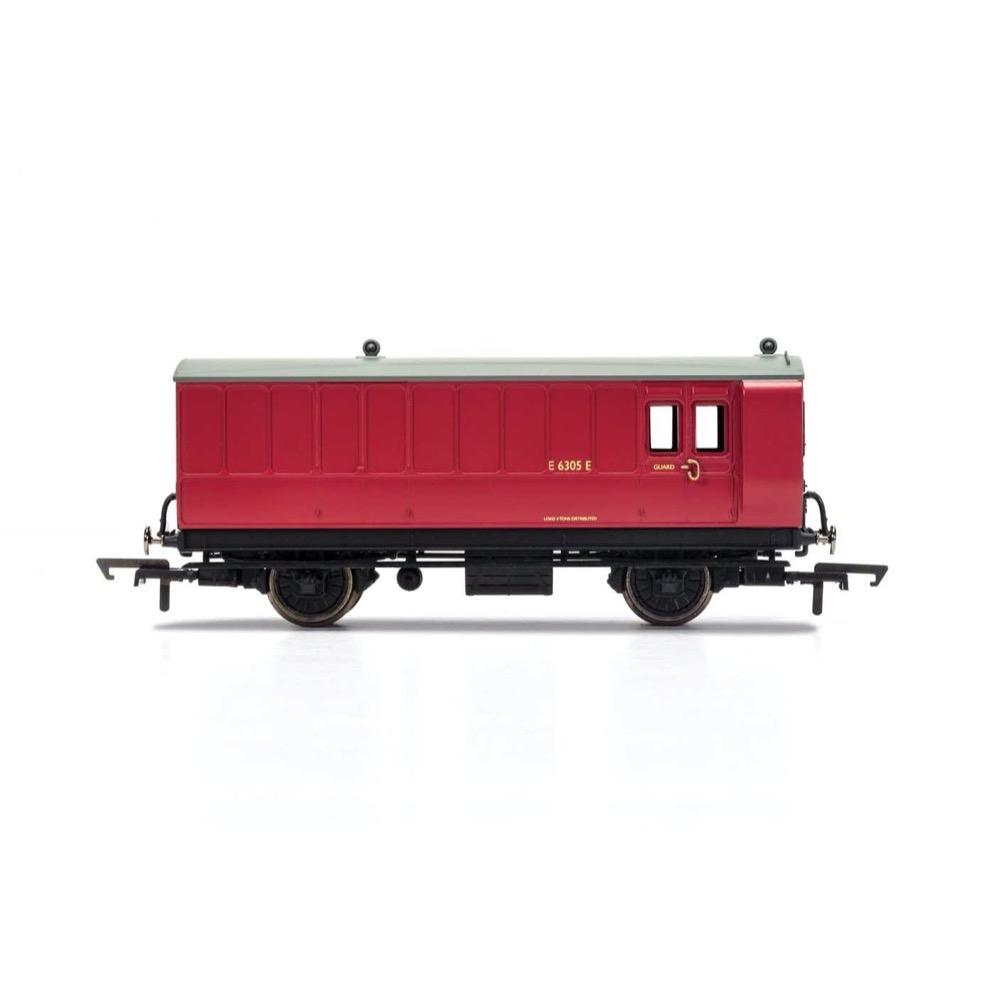
Hornby R40080 OO BR 4 Wheel Coach Brake Baggage E210E
This four wheeled coach is a representation of the many small coaches which survived into British Railway ownership. Four wheeled coaches proved especially good at branch line work where their small size enabled the traversing of tight radius curves, whilst lower passenger numbers meant their small size was more acceptable and enabled trains to be hauled by smaller engines.
This BR coach is modelled as having step boards to enable access at stations with low platforms and electric lighting.
Specification
- Item Length - Without Packaging (cm): 13.5
- Item Height - Without Packaging (cm): 5
- Item Width - Without Packaging (cm): 3.5
- Item Weight - Without Packaging: 0.06
- Item Scale: 1:76 Scale 00 Gauge
- Finish: Painted
- Colour: Red
- Gauge: OO
- Operator: BR
- Designer: BR
- Livery: BR
- Minimum Curve (mm): Radius 2
- Number of Parts: 1

Hornby R40388 OO BR Mk3 Trailer Guard Standard 44005 Era 7
In-order to allow running at 125 mph on Britain's Victorian era railways, new rolling stock was needed by British Railways. Significant improvements over the Mk2 included new secondary air suspension between the bogies and the coach body as well as aerodynamic skirting on the underframe.
Mk3 coaches are 75ft (23m) long enabling far greater capacity than older coaches. Mk3 coaches also incorporate disk breaks and wheel slip protection enabling faster deceleration. The first Mk3 coaches to be delivered were used as part of the HST prototype along with the two Class 41 diesel power cars in 1972.
Mk3 coaches entered service in 1975 along with the Class 43 forming the iconic InterCity 125 trainset. After the HST Mk3 coach variant was introduced, further Mk3 coaches were introduced to the West Coast Mainline for use as part of locomotive hauled trains. Whilst Mk3 stock is standard for HST units, the standard locomotive hauled stock is Mk3a.
Mk3a stock differs from Mk3 stock due to the inclusion of buffers as well as a different electrical system that uses motor generator units in each coach to power air conditioning and other ancillaries Mk3a stock was built until 1984, before 3B stock with improved seating and lighting was built from 1985 to 1988.
The Mk3 coach is perhaps most iconic in its original production livery of the BR Grey and Blue. It is in this livery that the coach, as well as the matching Class 43 units would be introduced, before high speed rail services in the UK would be rebranded into the Intercity Executive livery.
Following the privatisation of the Railway network, Mk3 coaches would find themselves in many colourful liveries, some harking back to the original blue and grey livery of times gone by.
These Mk3 coaches include the provision for lighting provided by the R7305 Maglight lighting unit, as well as fully detailed interiors and metal wheels throughout. For the first time, these coaches also include our new Buckeye style magnetic couplings.
Specification
- Item Length - Without Packaging (cm): 30.3
- Item Height - Without Packaging (cm): 5.5
- Item Width - Without Packaging (cm): 3.5
- Item Weight - Without Packaging: 0.158
- Item Scale: 1:76 Scale 00 Gauge
- Finish: Painted
- Colour: Blue and Grey
- Gauge: OO
- Operator: BR
- Designer: BREL
- Livery: BR Blue and Grey
- Minimum Curve (mm): Radius 2
- Number of Parts: 1
- Coupling Type: NEM Tension Lock
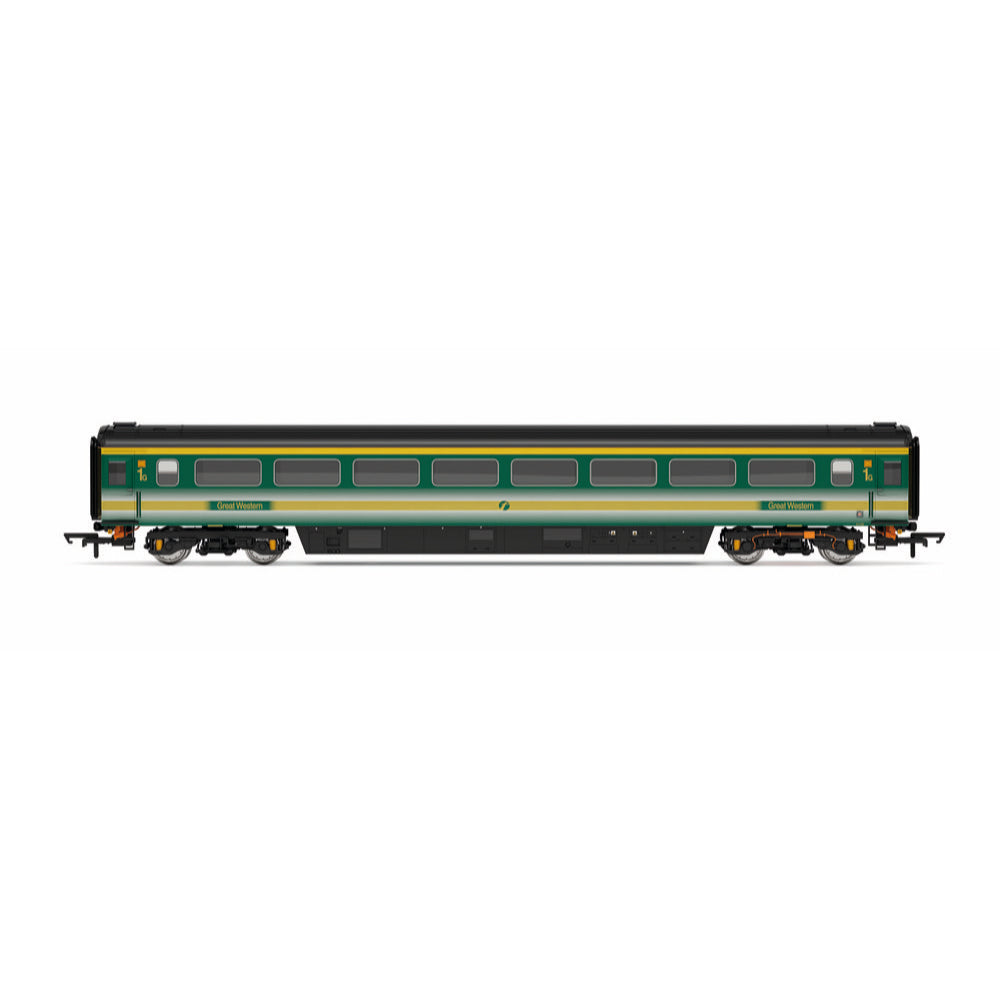
Hornby R40232A OO FGW c. 2002. Mk3 TFO Class Coach C
In-order to allow running at 125 mph on Britain's railways, new rolling stock was needed by British Railways in order to replace the aging Mk2s. Significant improvements over the Mk2 included new secondary air suspension between the bogies and the coach body as well as aerodynamic skirting on the underframe. Mk3 Coaches are 75ft (23m) long enabling far greater capacity than older coaches. Mk3 Coaches also incorporate disk brakes and wheel slip protection enabling faster deceleration.
The first Mk3 Coaches to be delivered were used as part of the HST prototype along with the two Class 41 diesel power cars in 1972. Mk3 coaches entered service in 1975 along with the Class 43 forming the iconic InterCity 125 trainset.
Following the FirstGroup's decision to buyout their partner's shares in Great Western Holdings, a decision was made to rebrand the Great Western Trains HST units to First Great Western (FGW). Visually this change involved the fitting of a new vinyl gold strip and colour fading, as well as fitting new FGW logos. This livery was relatively short lived with FGW introducing a variety of new liveries over the next few years which were more in keeping with the First Group's other corporate liveries.
Includes
- 1x Rolling stock Coach
Technical Specifications
- Item Length - Without Packaging (cm): 30.3
- Item Height - Without Packaging (cm): 5
- Item Width - Without Packaging (cm): 3.5
- Item Weight - Without Packaging: 0.19
- Item Scale: 1:76 Scale 00 Gauge
- Finish: Painted
- Colour: Green
- Operator: FGW
- Designer: BREL
- Livery: FGW Green, White and Gold
- Minimum Curve (mm): Radius 2
- Number of Parts: 1
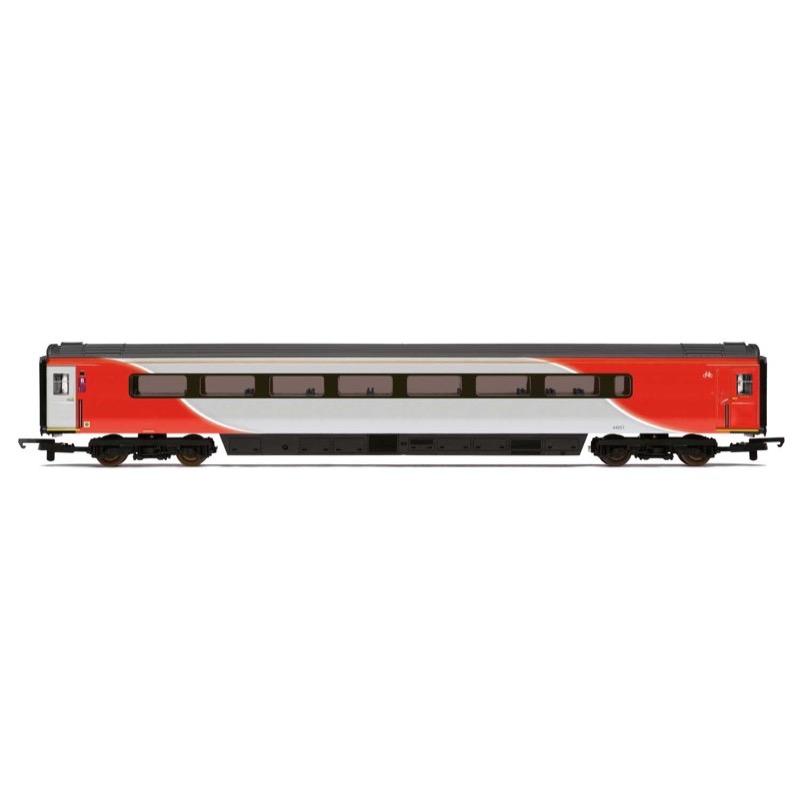
Hornby R4933B OO LNER Mk3 Trailer Guard Standard (TGS) Coach B 44057
In-order to allow running at 125 mph on Britain's Victorian era railways, new rolling stock was needed by British Railways. Significant improvements over the Mk2 included new secondary air suspension between the bogies and the coach body as well as aerodynamic skirting on the underframe. Mk3 coaches are 75ft (23m) long enabling far greater capacity than older coaches. Mk3 coaches also incorporate disk breaks and wheel slip protection enabling faster deceleration.
The first Mk3 coaches to be delivered were used as part of the HST prototype along with the two Class 41 diesel power cars in 1972. Mk3 coaches entered service in 1975 along with the Class 43 forming the iconic InterCity 125 trainset. In the Mid-2000s the Mk3 stock belonging to the InterCity East Coast franchise, operated by GNER, received refurbishment to bring them up to the same level as the Mk4 coaches that had been refurbished as part of 'Project Mallard'. LNER inherited its fleet of Mk3 coaches in 2018 after taking over the InterCity East Coast franchise from Virgin Trains East Coast.
The introduction of Class 800 and 801 sets has seen LNER replace all its InterCity 125 sets and as a result Mk3 coaches ceased operating with LNER after a farewell tour at the end of December 2019. Nine of the fourteen HST sets transferred to East Midlands Railway.
Specification
- Item Length - Without Packaging (cm): 30.3
- Item Height - Without Packaging (cm): 5
- Item Width - Without Packaging (cm): 3.5
- Item Weight - Without Packaging: 0.19
- Item Scale: 1:76 Scale 00 Gauge
- License: No
- Finish: Painted
- Colour: Grey
- Gauge: OO
- Operator: LNER
- Designer: BREL
- Livery: LNER Red/Silver
- Minimum Curve (mm): Radius 2
- Number of Parts: 1
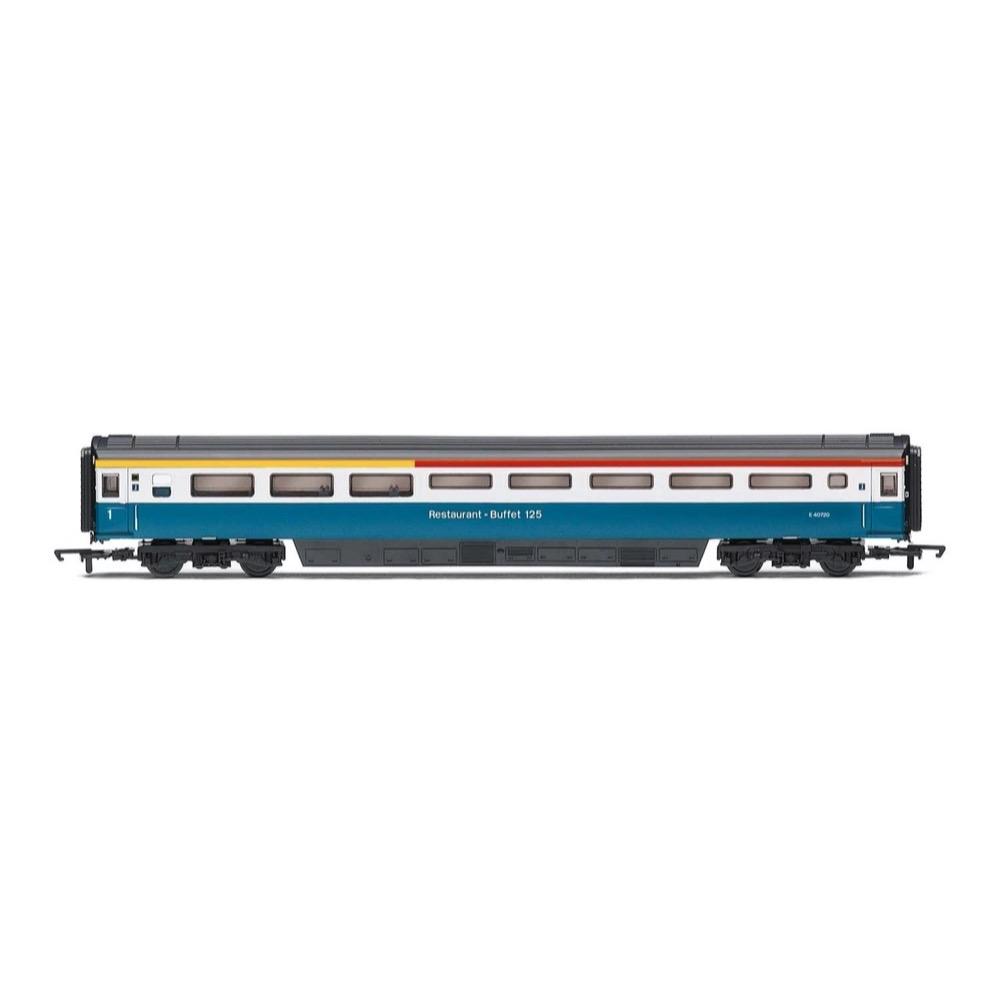
Hornby R40044 OO LNER (BR) Mk3 Buffet (TRFB) (Farewell Tour) Coach J 40720
In-order to allow running at 125 mph on Britain's Victorian era railways, new rolling stock was needed by British Railways. Significant improvements over the Mk2 included new secondary air suspension between the bogies and the coach body as well as aerodynamic skirting on the underframe.
Mk3 coaches are 75ft (23m) long enabling far greater capacity than older coaches. Mk3 coaches also incorporate disk breaks and wheel slip protection enabling faster deceleration. The first Mk3 coaches to be delivered were used as part of the HST prototype along with the two Class 41 diesel power cars in 1972. Mk3 coaches entered service in 1975 along with the Class 43 forming the iconic InterCity 125 trainset. After the HST Mk3 coach variant was introduced, further Mk3 coaches were introduced to the West Coast Mainline for use as part of locomotive hauled trains. Whilst Mk3 stock is standard for HST units, the standard locomotive hauled stock is Mk3a.
Mk3a stock differs from Mk3 stock due to the inclusion of buffers as well as a different electrical system that uses motor generator units in each coach to power air conditioning and other ancillaries Mk3a stock was built until 1984, before 3B stock with improved seating and lighting was built from 1985 to 1988.
After an iconic life of service on the East Coast Main Line, LNER removed its Inter-City 125s from service at the end of 2019. To celebrate LNER announced a farewell rail tour using power cars 43206 and 43312 along with 7 Mk3 coaches. The entire train was repainted in the original blue and yellow livery and the tour lasted for four days.
Specification
- Item Length - Without Packaging (cm): 30.3
- Item Height - Without Packaging (cm): 5
- Item Width - Without Packaging (cm): 3.5
- Item Weight - Without Packaging: 0.19
- Item Scale: 1:76 Scale 00 Gauge
- License: No
- Finish: Painted
- Colour: Blue
- Gauge: OO
- Operator: LNER
- Designer: BREL
- Livery: BR Corporate Blue
- Minimum Curve (mm): Radius 2
- Number of Parts: 1
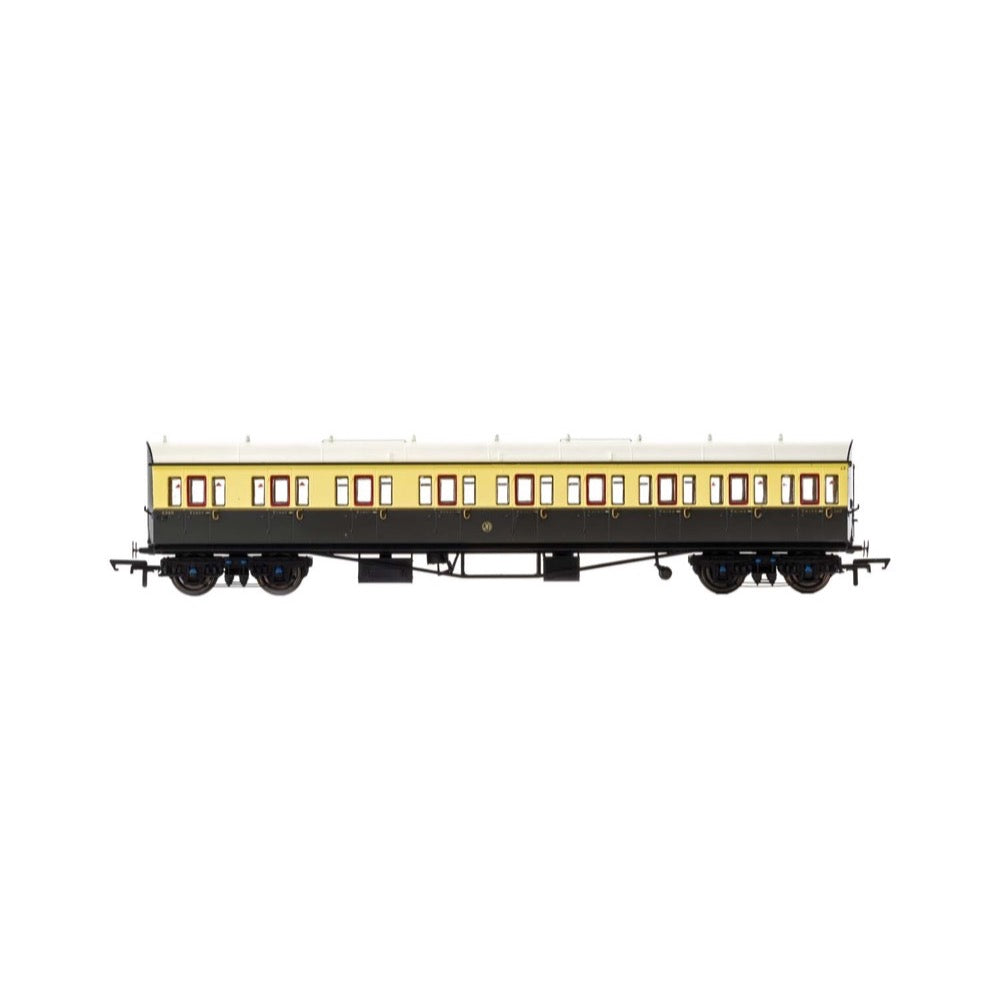
Hornby R4874 GWR Collett 57 Bow Ended E131 Nine Compartment Composite Left Hand 6360 - Era 3
GWR, Collett 57' Bow Ended E131 Nine Compartment Composite (Left Hand), 6360 - Era 3 coach measures 242mm and the chocolate and cream 'shirt button' colour livery gives this creation a real vintage, Era 3 feel to any train track.
Specifications
- Item Length - Without Packaging (cm): 31.5
- Item Height - Without Packaging (cm): 4.5
- Item Width - Without Packaging (cm): 9
- Item Weight - Without Packaging: 0.21
- Item Scale: 1:76 Scale 00 Gauge
- License: No
- Finish: Painted
- Colour: Chocolate
- Gauge: OO
- Operator: GWR
- Designer: Charles Collett
- Livery: Chocolate & Cream
- Number of Parts: 1
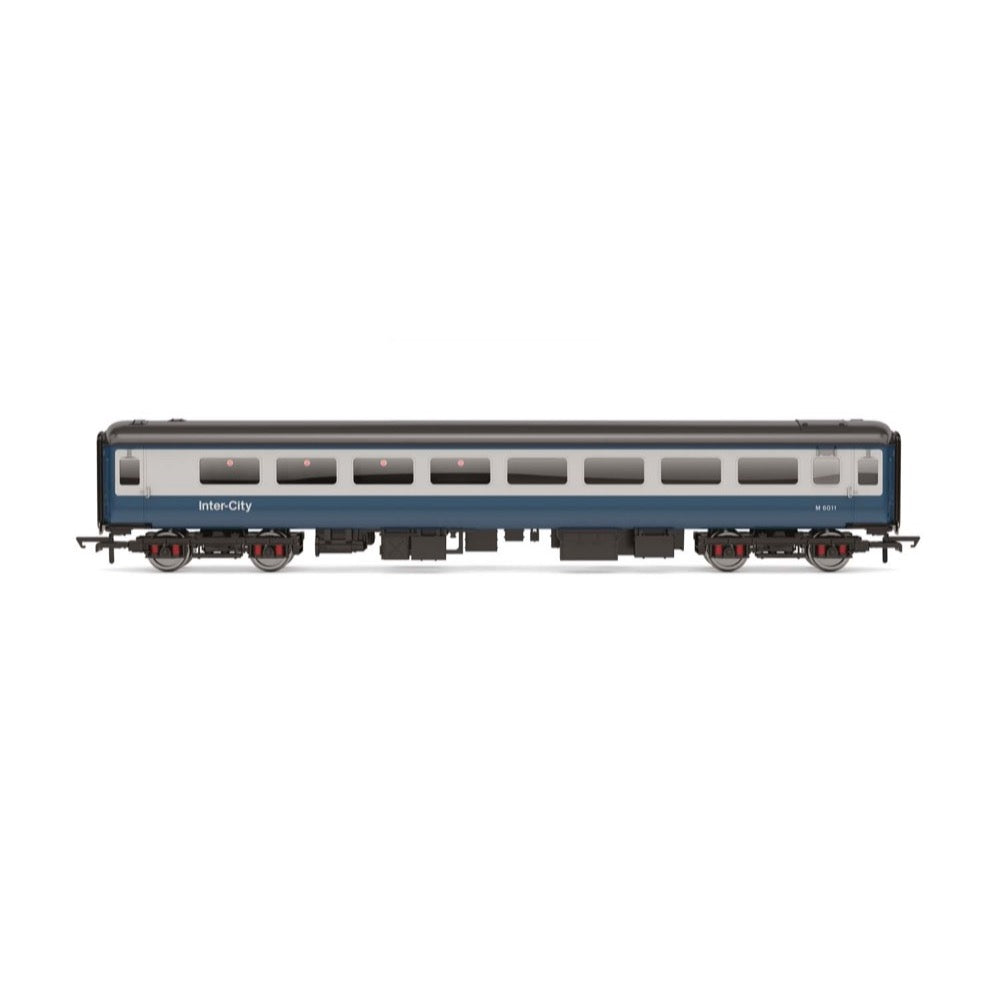
Hornby R4916A BR Mk2F Tourist Second Open M6015 - Era 7
BR, Mk2F Tourist Second Open, M6015 - Era 7
Specifications
- Finish: Pristine
- Livery: Blue & Grey
- Coupling: NEM / Tension lock
- Minimum radius curve: Radius 2
- Coach type: British Railways Mark 2F
- Operator: British Rail
- TOPS classification: TSO (Trailer Standard Open)
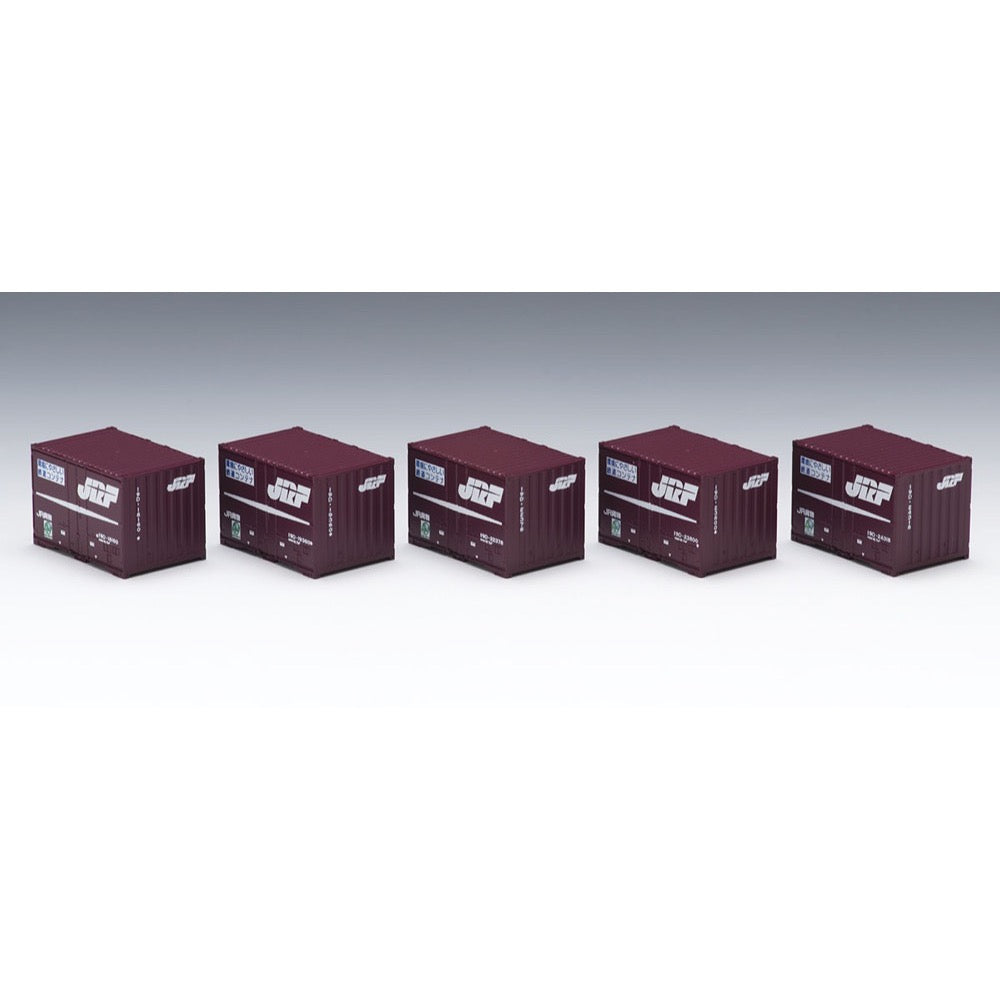
Tomix 3303 N 3303 19D Container 5pcs
The 19D container was introduced in 1995 as the standard 12ft container for rail transport, and is still used today as the main container throughout the country.
There are differences in design depending on the year of manufacture.
Features
- Reproduces the group with the JRF logo
- Can be mounted on Tomix's Koki 106, 107 and each container freight car with one touch
- Container numbers (19D-18160, 19360, 22378, 23800, 24318) are printed
- JRF logo and Ecorail mark are printed
- 5 pieces included


